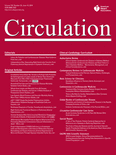 A paper accidentally credited the wrong researcher with providing part of an experiment.
A paper accidentally credited the wrong researcher with providing part of an experiment.
It turns out that one of the authors supplied an expression vector to a Circulation paper about the molecular underpinnings of atherosclerosis — not the outside researcher originally thanked in the acknowledgements section.
The correction notice to the paper makes the situation sound more mysterious than it appears to be:
In the article by Giannarelli, et al, “Alternatively Spliced Tissue Factor Promotes Plaque Angiogenesis Through the Activation of Hypoxia-Inducible Factor-1α and Vascular Endothelial Growth Factor Signaling,” which was published in the October 7, 2014 issue of the journal (Circulation. 2014;130:1274–1286, doi:10.1161/CIRCULATIONAHA.114.006614), a correction is needed. Specifically, in the Acknowledgments section, it was noted that the pTriEx3-Neo-asTF expression vector was a gift from Dr. V.Y. Bogdanov. Dr. Giannarelli has reported that this statement is incorrect. For this reason, the Acknowledgment to Dr. Bogdanov has been removed. The source of the vector is unknown. The matter had been referred to the authors’ institutions but there is no confirmation to date.
The revised Acknowledgment section reads:
We thank Rolando Nolasco for immunohistochemistry studies. We acknowledge Aesha Patel (RPA-C), the Institutional Biorepository/Biospecimen Bank Shared Resource Facility (SRF), and the Microscopy (SRF) of the Mount Sinai Medical Center. Ad.VEGF-Trap was a generous gift from Regeneron to Drs Hutter and Badimon.
The paper has been cited 10 times, according to Thomson Reuters Web of Science.
Despite what the correction note says, the authors do know the source of the vector. According to first author Chiara Giannarelli, who works at Mount Sinai:
Our team received the plasmid from Dr. Gerald Soff who is at Memorial Sloan-Kettering Cancer Center in NY.
The original acknowledgement section said that the vector was a gift to Soff from Vladimir Bogdanov, who works at the University of Cincinnati:
We thank Rolando Nolasco for immunohistochemistry studies. We acknowledge Aesha Patel (RPA-C), the Institutional Biorepository/ Biospecimen Bank Shared Resource Facility (SRF), and the Microscopy (SRF) of the Mount Sinai Medical Center. The pTriEx3- Neo-asTF expression vector was a gift from Dr V.Y. Bogdanov to Dr Soff. Ad.VEGF-Trap was a generous gift from Regeneron to Drs Hutter and Badimon.
We reached out to Circulation to ask about the discrepancy between the researchers’ story and the notice. A spokesperson for the American Heart Association, which publishes the journal, got back to us:
AHA is not an investigative body and, therefore, the source is unknown to the organization. AHA referred the matter to the institution (Mt. Sinai) of the corresponding author, Dr. Giannarelli. Please contact Mt. Sinai for more information.
The spokesperson was able to tell us that:
The issue came to light when Dr. Bogdanov brought the matter to AHA’s attention and the organization felt a correction was warranted. AHA’s role is that of publisher so questions specific to the article, vector, etc. should be directed to the authors and/or institutions.
We’ve reached out to Bogdanov, and to Mount Sinai. We’ll update this post with anything else we learn.
Hat tip: Kerry Grens
Like Retraction Watch? Consider making a tax-deductible contribution to support our growth. You can also follow us on Twitter, like us on Facebook, add us to your RSS reader, sign up on our homepage for an email every time there’s a new post, or subscribe to our new daily digest. Click here to review our Comments Policy. For a sneak peek at what we’re working on, click here.